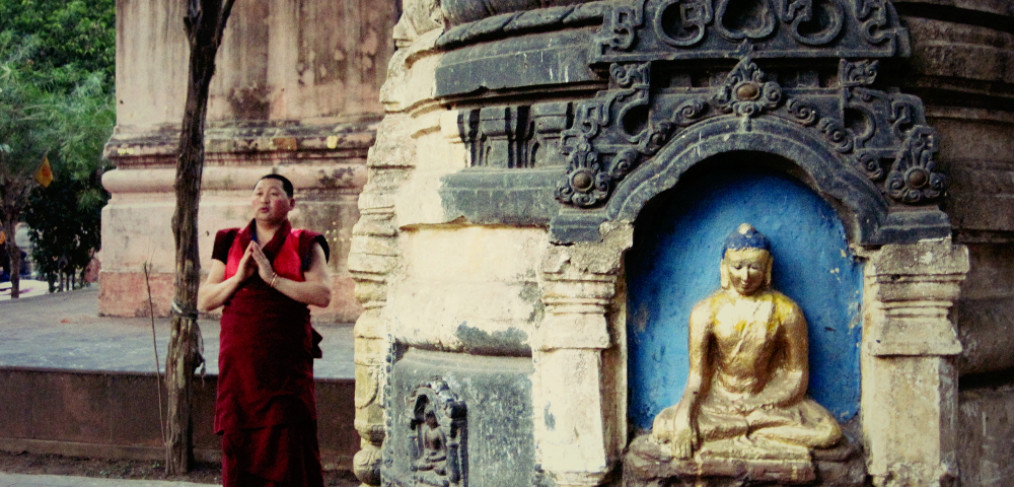
Meditating at the Mahabodhi Temple Complex
As the sun was setting, with monks beside me, I finally sat down to meditate. As I’ve previously studied Vipassana meditation, it was an experience that I was very much looking forward to. The overhead tree branches were alive with bird chatter, while gentle chanting in the background and the waft of incense helped lull me into quiet contemplation.
In contrast to its reverence as one of the world’s most important religions, Buddhism was born in a state in north India that’s become notorious for its poverty and lawlessness. Despite this turmoil, the largely rural state of Bihar is an important pilgrimage destination for Buddhists, as it’s where the Buddha spent much of his life preaching after becoming enlightened.
The Buddha’s enlightenment took place while he was meditating under a bodhi tree in a place called Bodhgaya in central Bihar. To get there, these days, requires a three hour drive from capital city Patna. The closest town, called Gaya, is a disturbingly loud, seething jumble of people, animals, roads, and traffic of all kinds. It’s a grateful relief that Bodh Gaya, only 12 kilometers away, doesn’t have a similar environment.
The Mahabodhi Temple complex, believed to have first been built by Emperor Ashoka in the 3rd century, marks the spot where the Buddha was enlightened. Now a UNESCO Word Heritage site, this elaborately crafted and immaculately restored complex has a very serene ambiance, which people from all walks of life can soak up and appreciate.
As I made my way past the cacophony of enthusiastic vendors selling the usual devotional items, I got a glimpse of what waited for me inside the temple complex — and my soul soared with delight. I hadn’t thought it would be so large, and there looked like so many places where I could lose myself in its sprawling grounds.
Apart from the main shrine that houses a gold painted statue of Buddha (made of black stone built by the Pala kings of Bengal), there are several different places of significance where the Buddha spent time subsequent to becoming enlightened. Signs indicate where each one is, and by walking around discovering them all, you’ll be able to retrace the Buddha’s activities.
Of course, the most important of the sacred places is the bodhi tree. Not to be confused with the many other large trees in the complex, it lies directly behind the main shrine, to the west. The shrine faces east, which is the direction Buddha was facing when he was meditating under the tree.
To the south, a pond adjoins the temple complex, and it’s said to be where the Buddha may have bathed. Yet, it was the area surrounding the place of contemplation (known as the Jewel House or Ratanaghara) to the northeast, in the complex’s inner courtyard, that I was most drawn to. The Buddha was believed to have spent the fourth week after enlightenment in mediation there. Nearby, Monks perform prostrations while others mediate on the wooden boards, especially placed on the grass between the cluster of votive stupas under a huge banyan tree.
Away from the chatter of noisy tourists, many of whom didn’t venture into the area, I found it so easy to leave worldly concerns behind. Those who take the time to be silent and reflective will be able to feel that the energy there is very soothing and uplifting. It’s positively influenced by the great deal of spiritual activity, such as chanting and meditation, taking place on the temple grounds.

Sounds delightful.